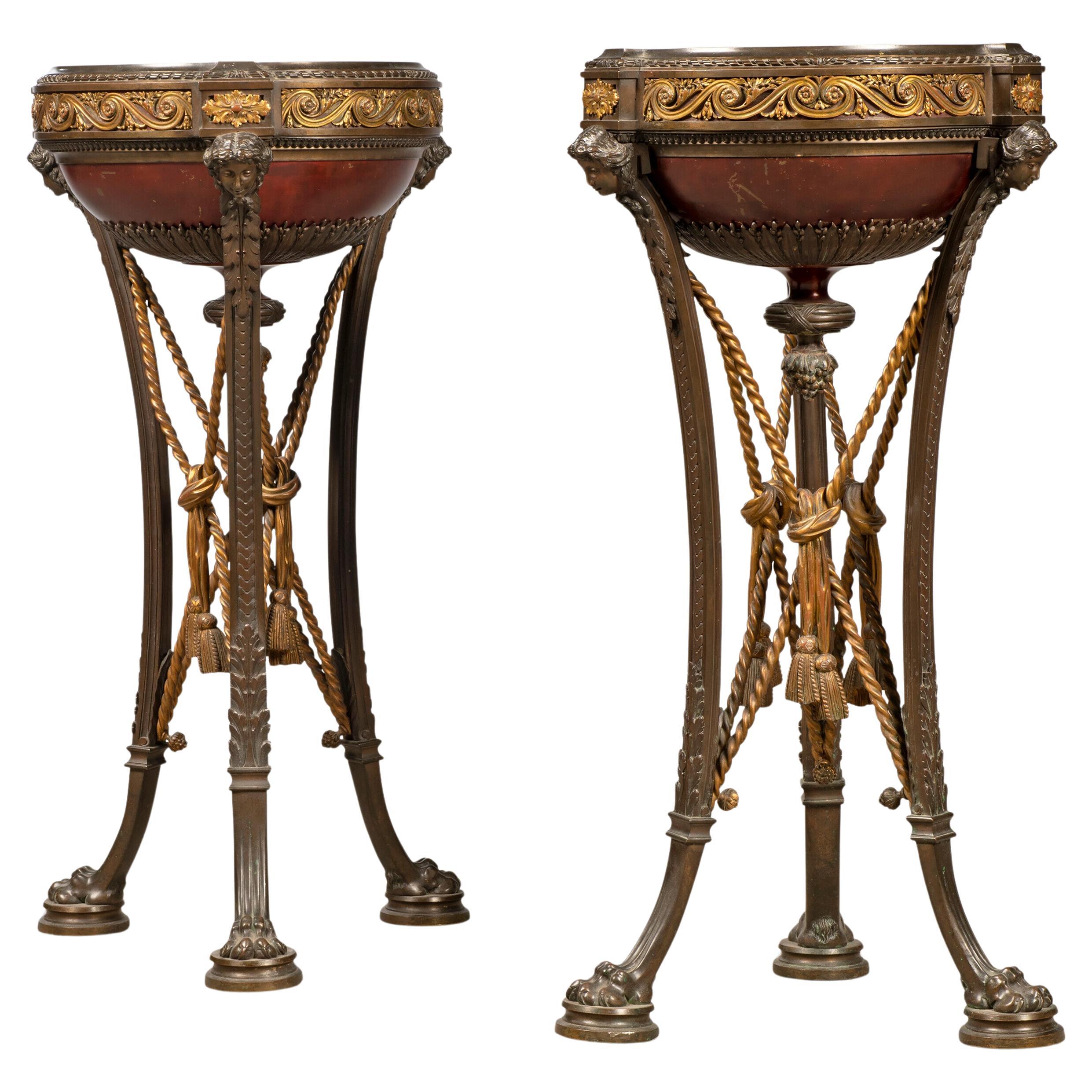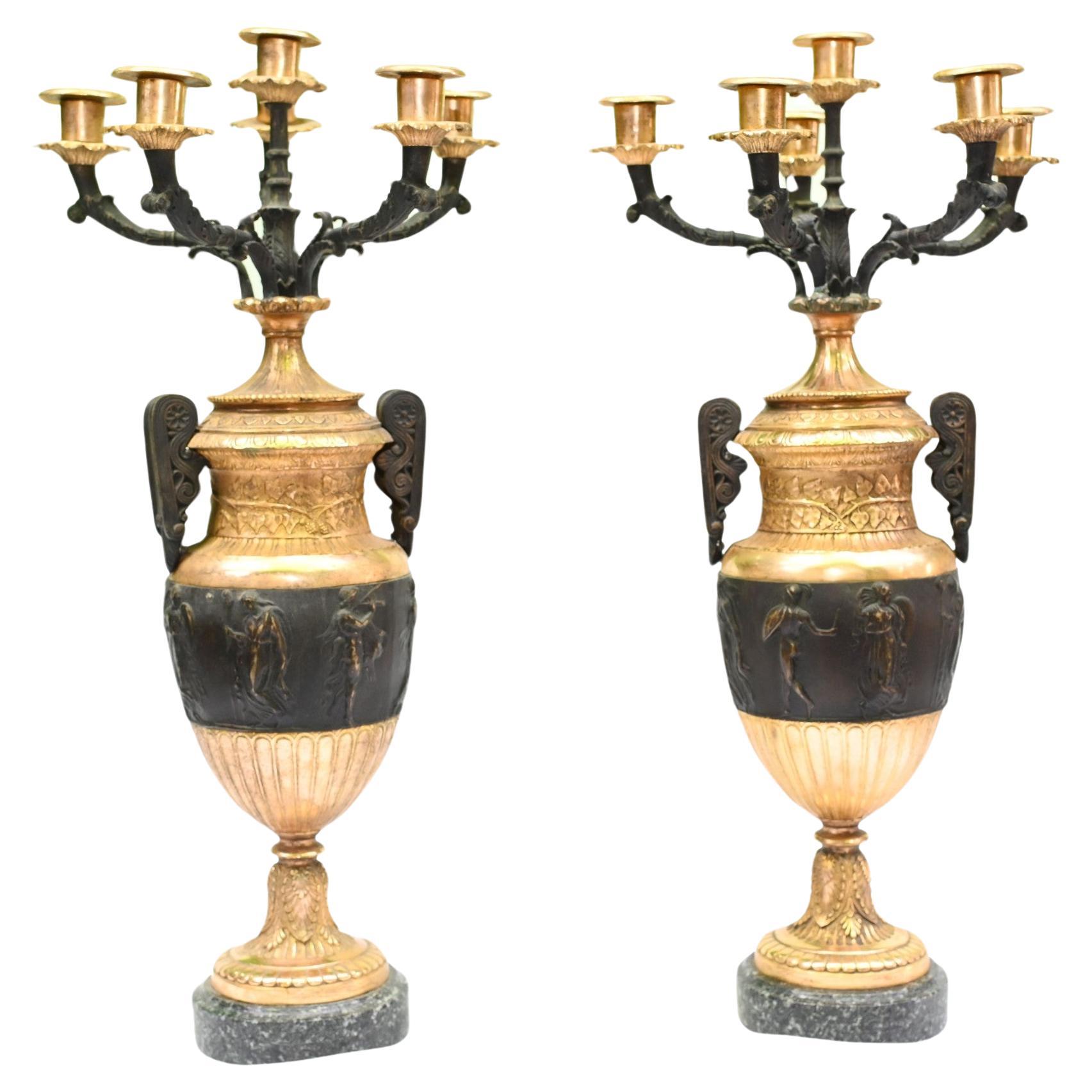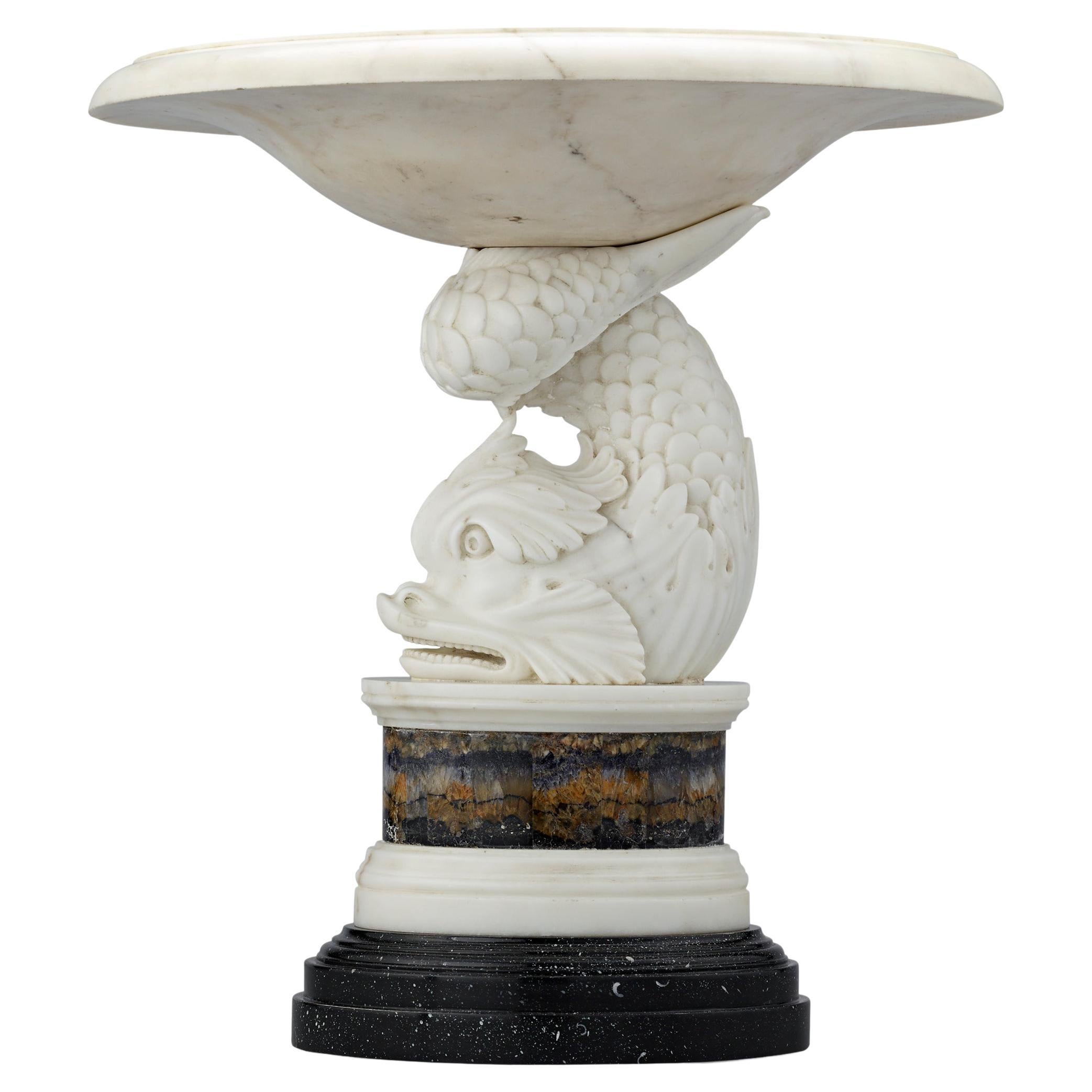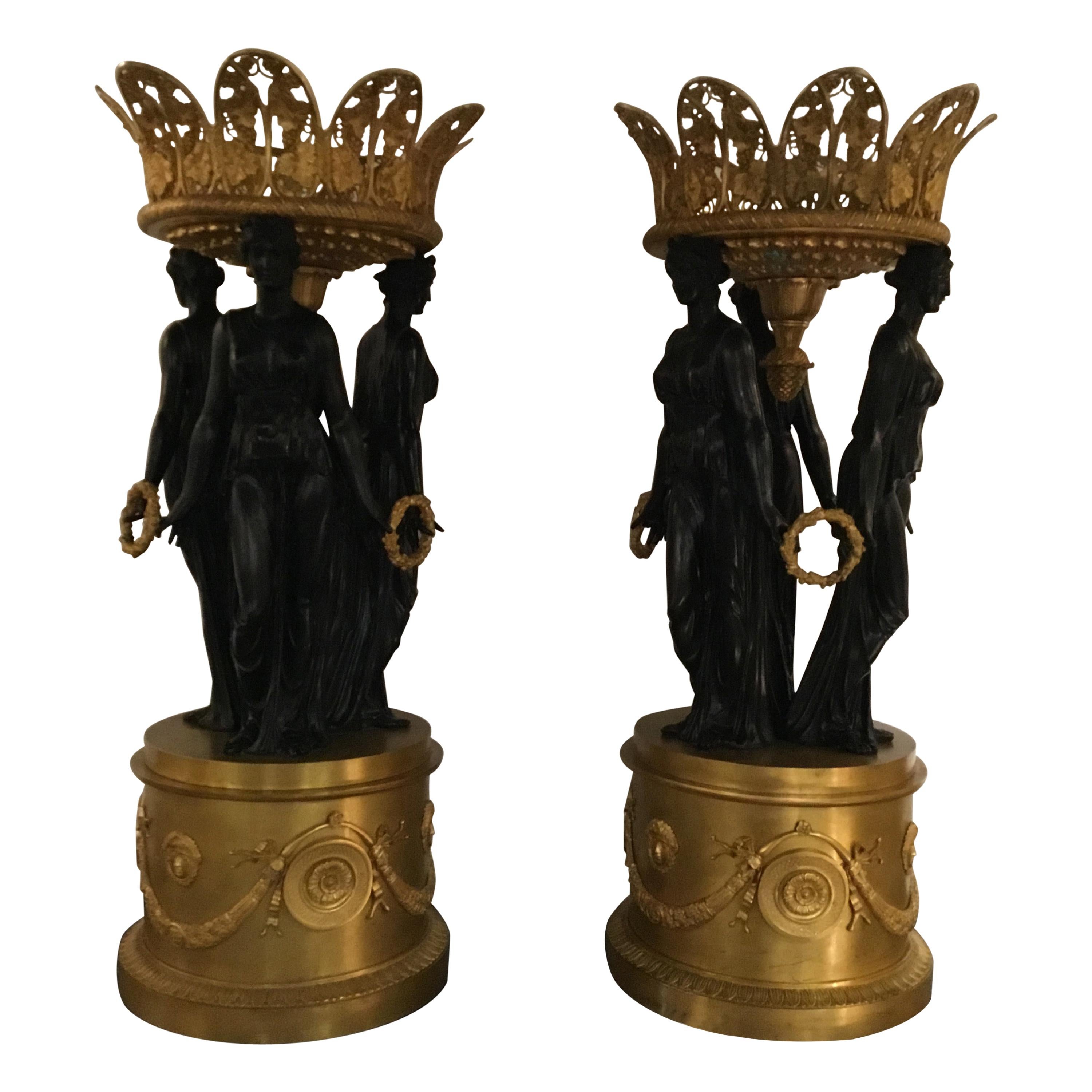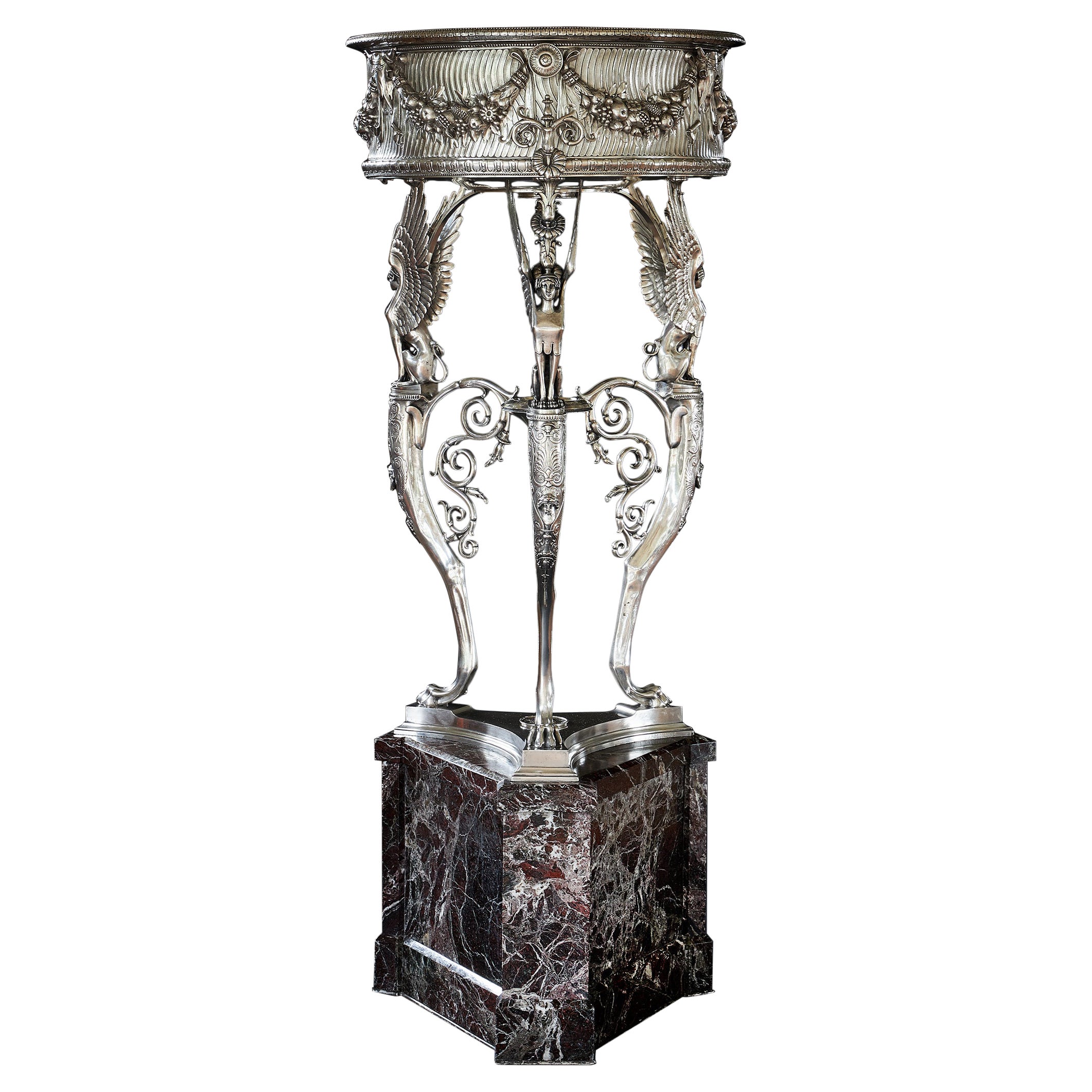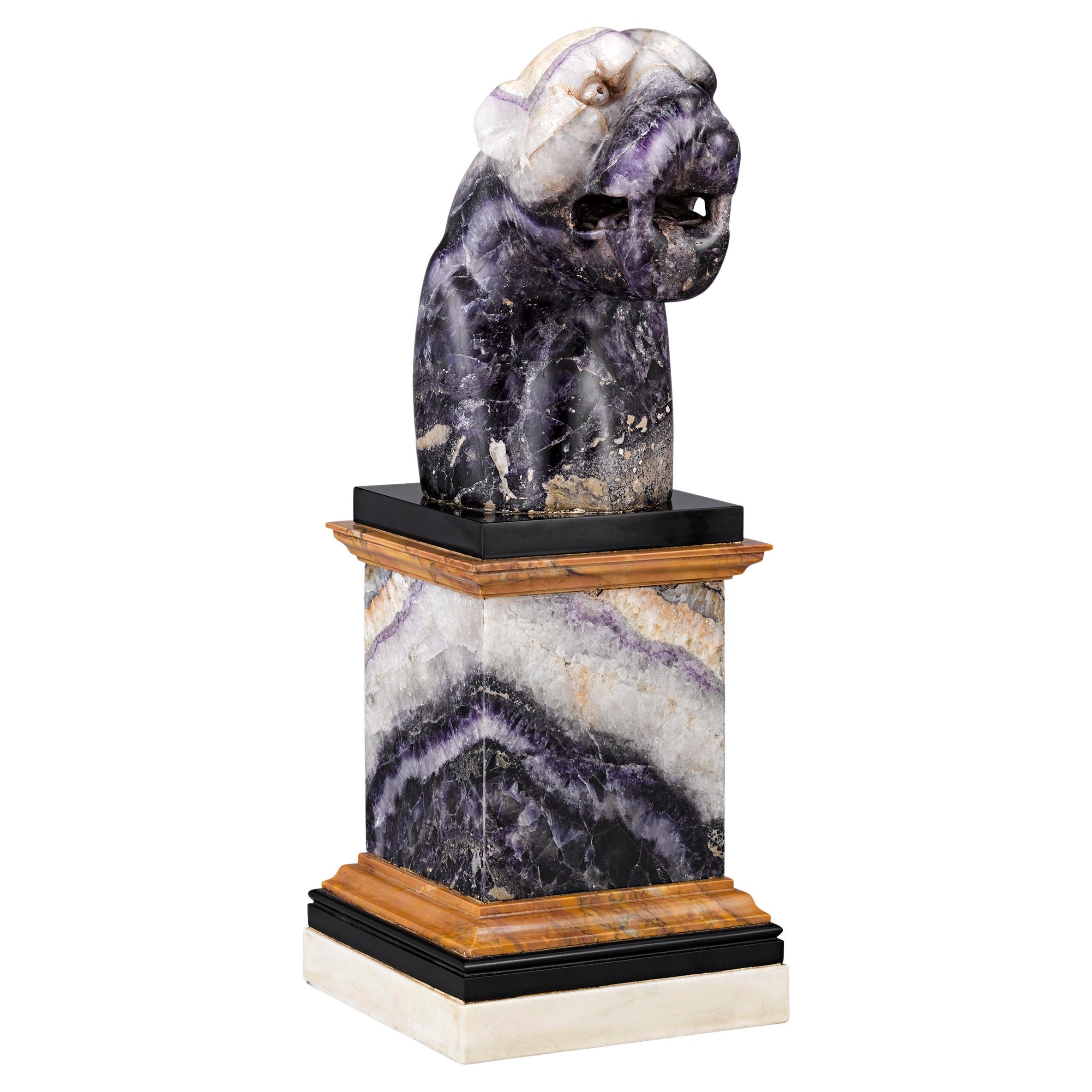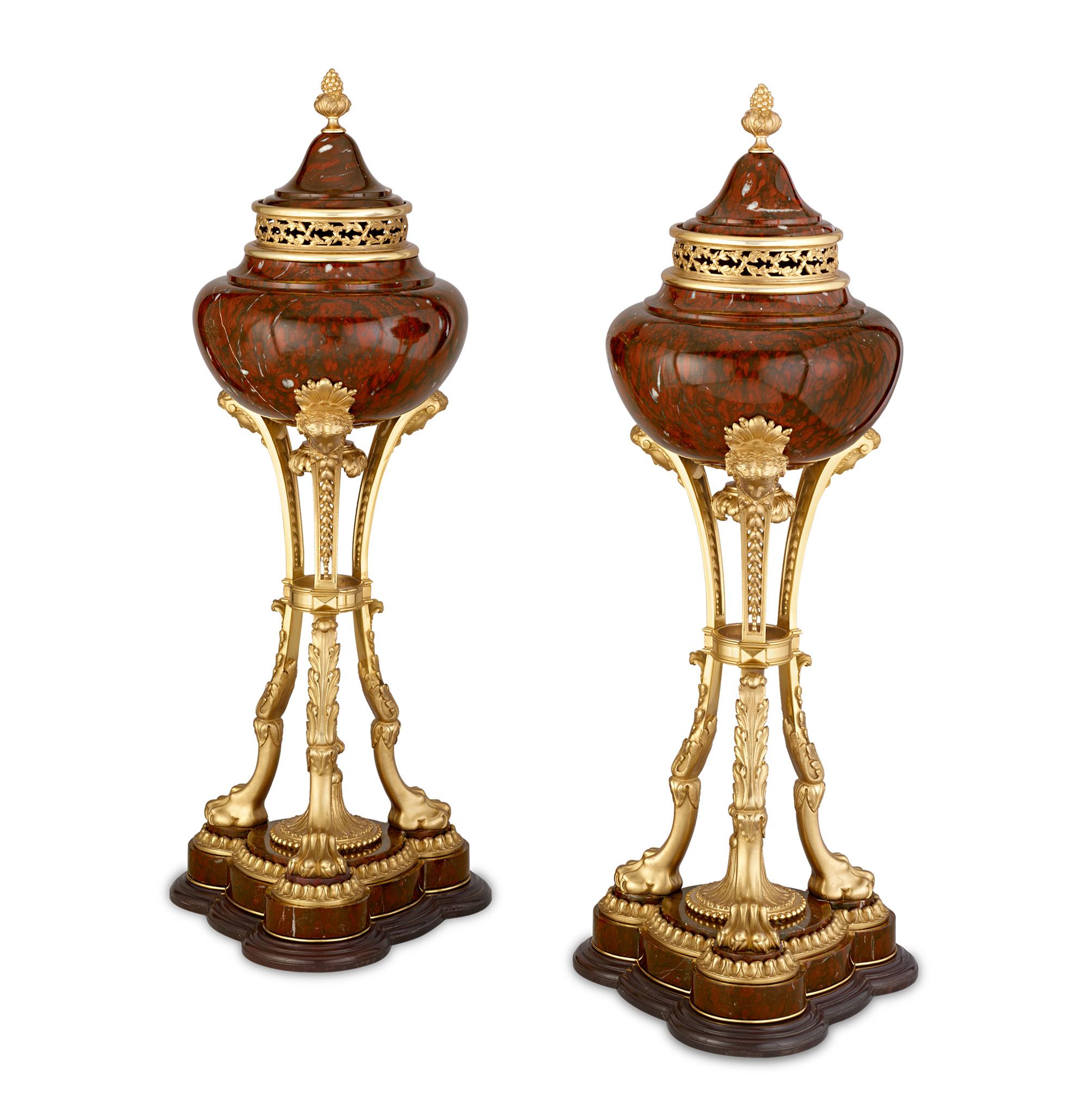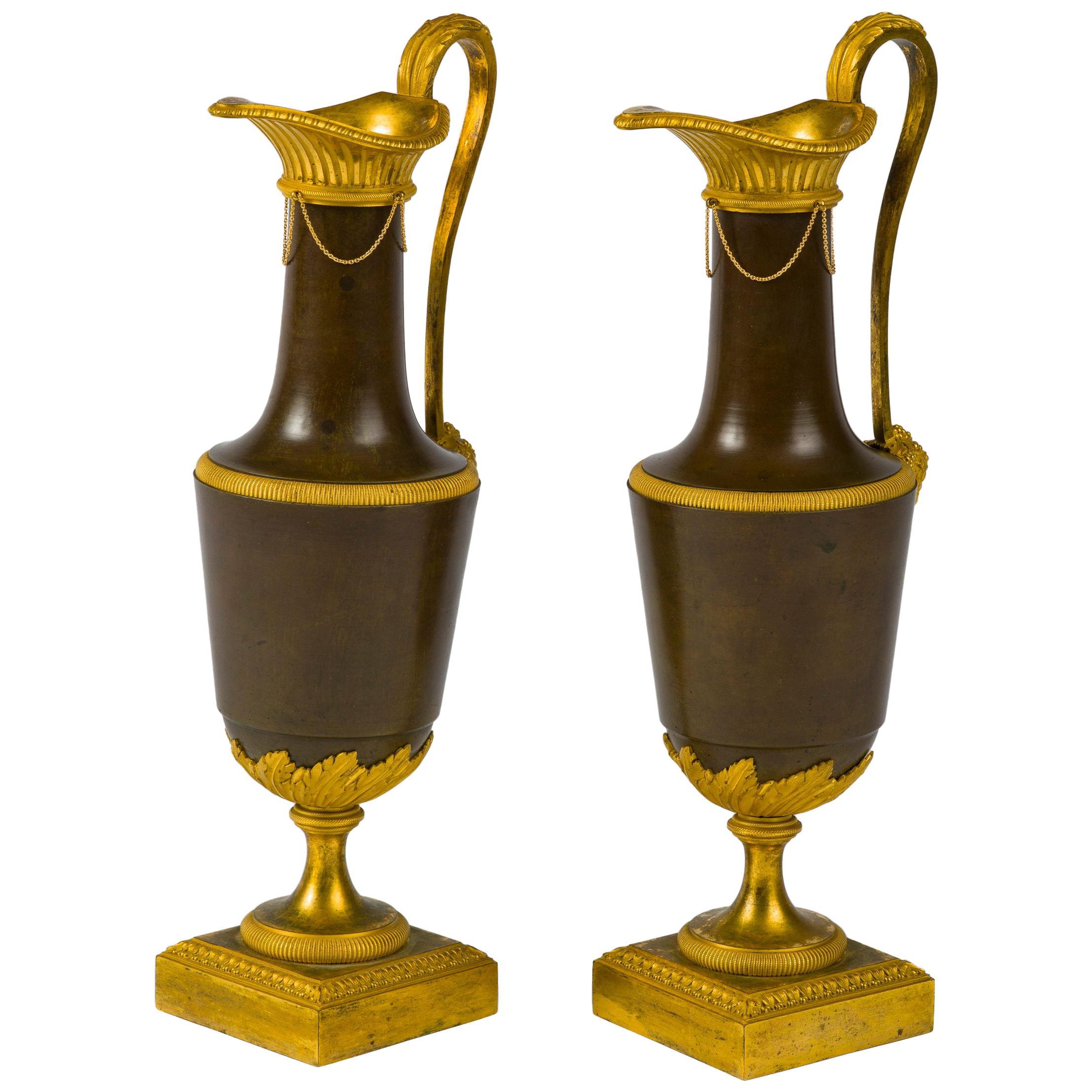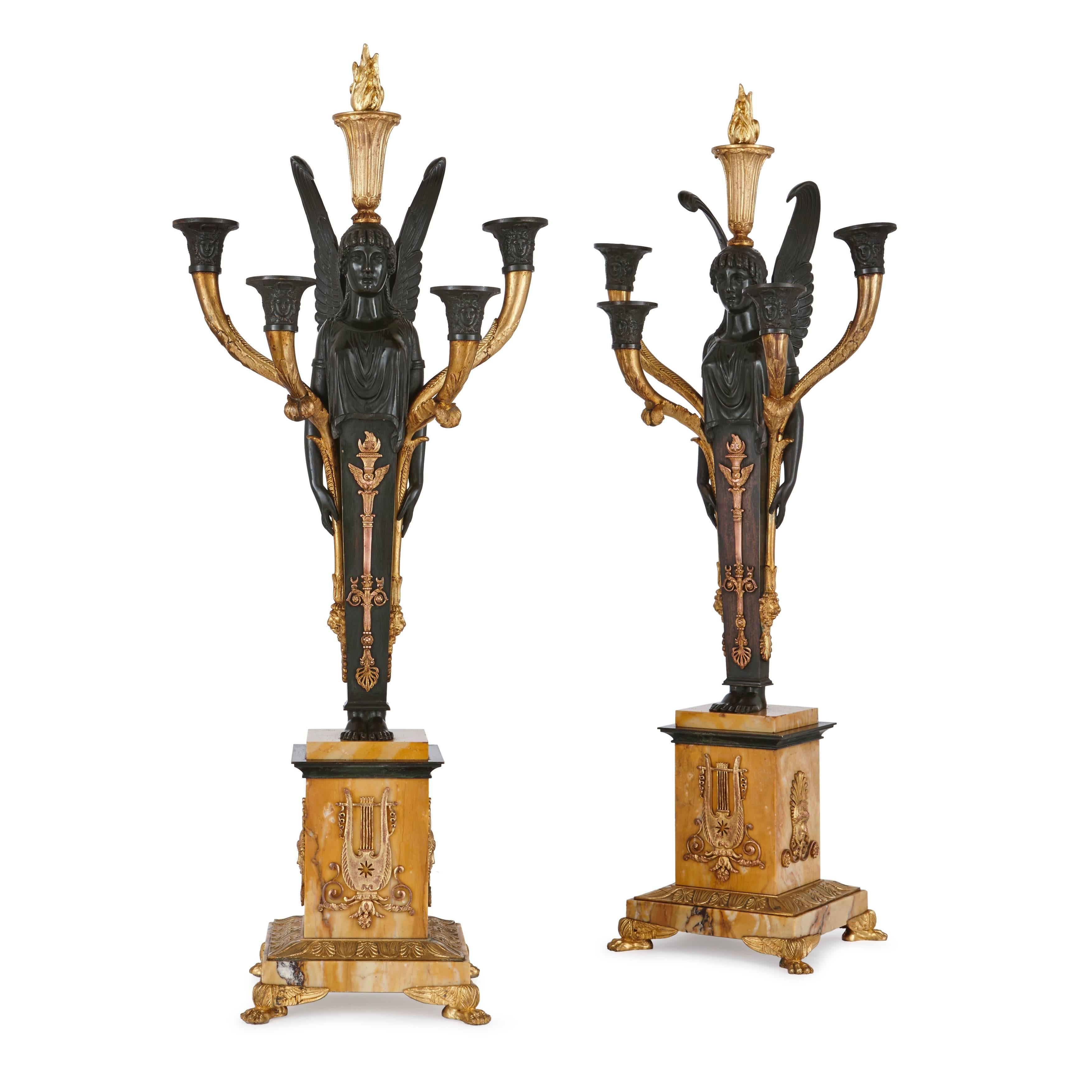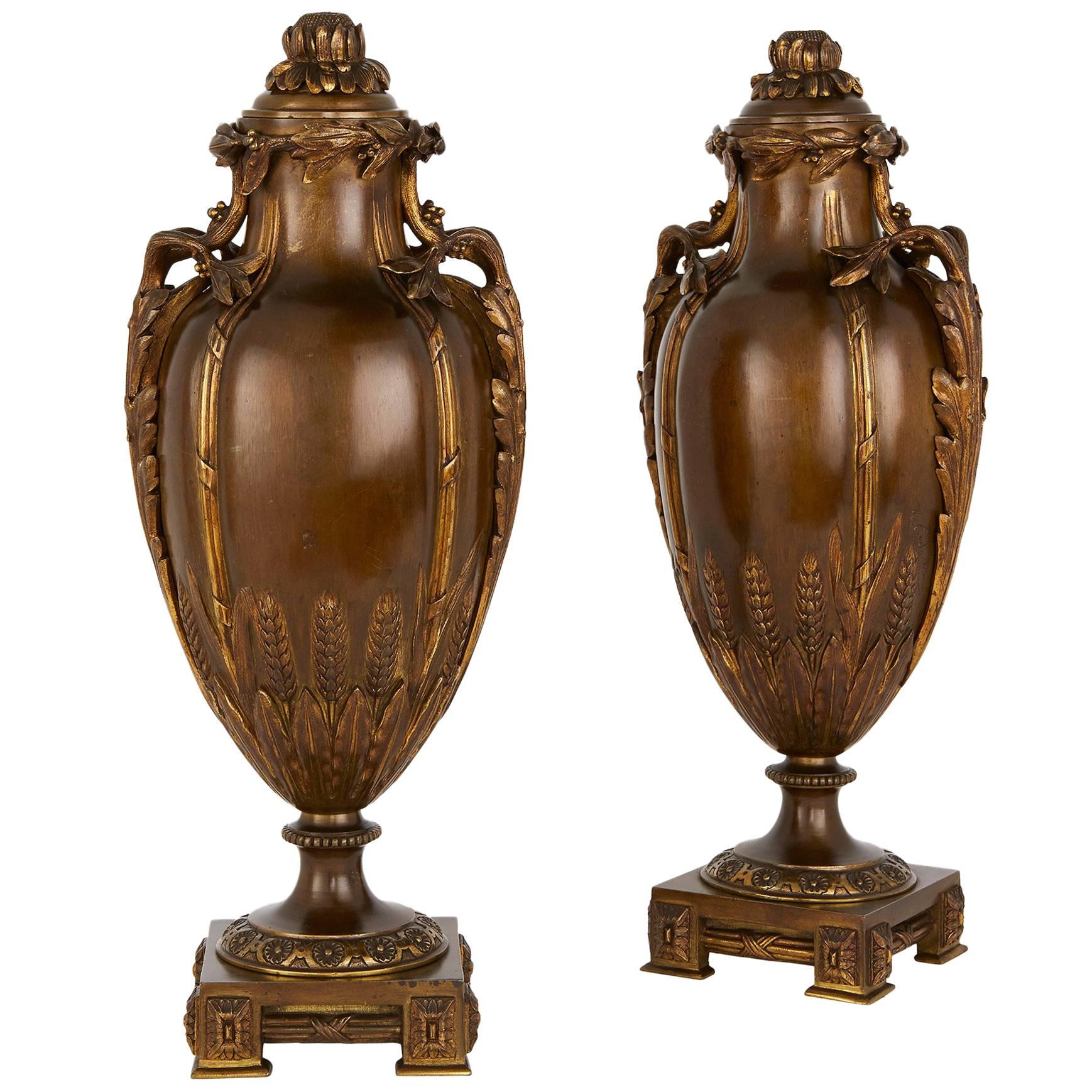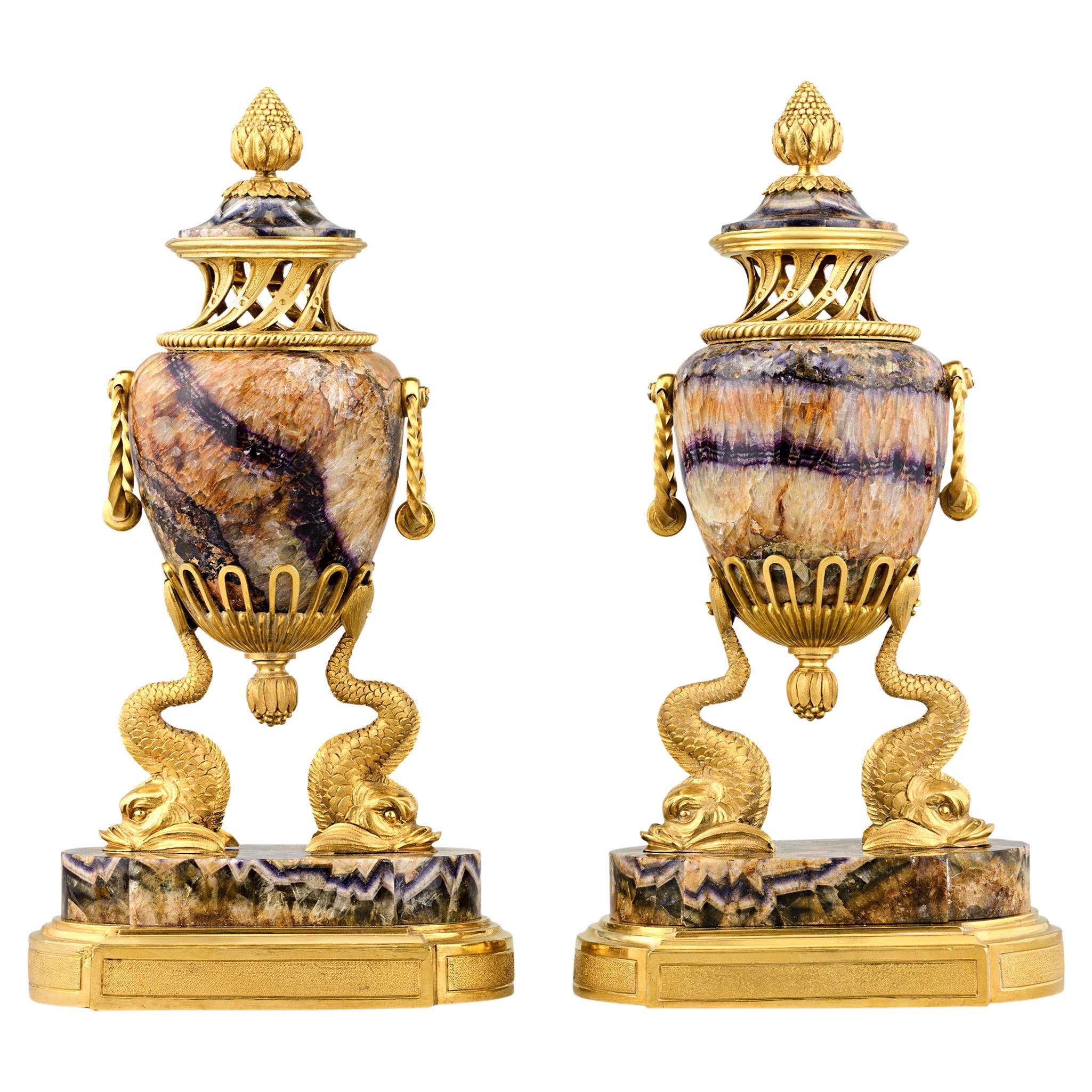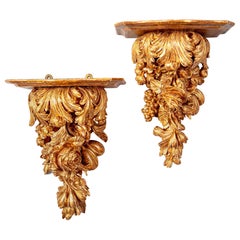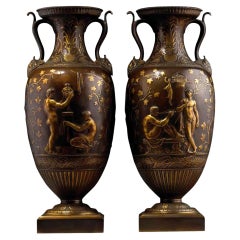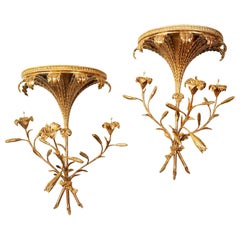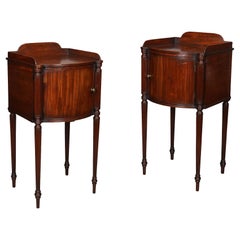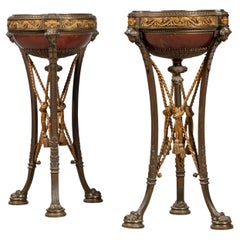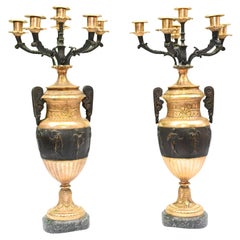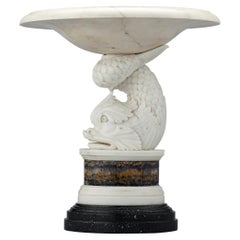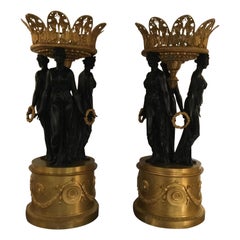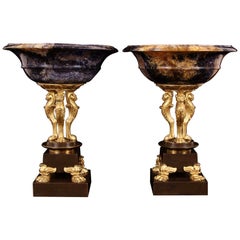
Pair of Thomas Hope George III Blue John Patinated and Gilt Bronze Atheniennes
View Similar Items
Want more images or videos?
Request additional images or videos from the seller
1 of 17
Pair of Thomas Hope George III Blue John Patinated and Gilt Bronze Atheniennes
About the Item
- Attributed to:Thomas Hope (Designer)
- Dimensions:Height: 12 in (30.48 cm)Diameter: 9.5 in (24.13 cm)
- Style:George III (Of the Period)
- Materials and Techniques:
- Place of Origin:
- Period:
- Date of Manufacture:1810
- Condition:Refinished. Wear consistent with age and use. The metalwork has been consolidated, corrosion has been halted and neutralised.
- Seller Location:London, GB
- Reference Number:1stDibs: LU1204222256682
About the Seller
4.9
Vetted Professional Seller
Every seller passes strict standards for authenticity and reliability
Established in 2012
1stDibs seller since 2015
118 sales on 1stDibs
Typical response time: 9 hours
Authenticity Guarantee
In the unlikely event there’s an issue with an item’s authenticity, contact us within 1 year for a full refund. DetailsMoney-Back Guarantee
If your item is not as described, is damaged in transit, or does not arrive, contact us within 7 days for a full refund. Details24-Hour Cancellation
You have a 24-hour grace period in which to reconsider your purchase, with no questions asked.Vetted Professional Sellers
Our world-class sellers must adhere to strict standards for service and quality, maintaining the integrity of our listings.Price-Match Guarantee
If you find that a seller listed the same item for a lower price elsewhere, we’ll match it.Trusted Global Delivery
Our best-in-class carrier network provides specialized shipping options worldwide, including custom delivery.More From This Seller
View AllPair of George III Giltwood Wall Brackets
Located in London, by appointment only
An exceptional pair of mid-18th century carved and water gilt wall brackets profusely carved with acanthus leaves and swags of plump roses, ripe fruits, harebells and flower heads.
...
Category
Antique Mid-18th Century English George III Wall Brackets
Materials
Giltwood
$16,444 / set
Pair of Bronze and Gilt Classical Vases by Barbedienne, 19th Century
By Ferdinand Barbedienne
Located in London, by appointment only
A fine pair of 19th-century Bronze and Gilt Classical Vases By Ferdinand Barbedienne 1810-1892.
Each is unique with male nude figures in classical Greek poses playing music and ad...
Category
Antique 19th Century French Neoclassical Vases
Materials
Bronze
Pair of George III Giltwood Lily Wall-Brackets
Located in London, by appointment only
A magnificent pair of late 18th century George III giltwood wall brackets fashioned as bunches of lilies suspended below festoons of 7...
Category
Antique Late 18th Century English George III Wall Brackets
Materials
Giltwood
$47,964 / set
Pair of George III Mahogany Bedside Cabinet Nightstands Manner of Gillows
By Gillows of Lancaster & London
Located in London, by appointment only
A very useful pair of late 18th century bedside cabinets
Crafted from the finest South American mahogany
With curved opposing doors and raised on tapering fluted legs in the manner...
Category
Antique Late 18th Century English George III Cabinets
Materials
Mahogany
George III Cellarette Attributed to Gillows of London and Lancaster
By Gillows of Lancaster & London
Located in London, by appointment only
Nicholas Wells Antiques are delighted to offer this exceptional mahogany cellarette is constructed in an oval form with a superb hinged lid, decorated with tapering flutes and edged ...
Category
Antique Late 18th Century English George III Wine Coolers
Materials
Mahogany
Lorenzo Bartolini Neo Classical Statuary Marble Snake Handled Tazza and Column
Located in London, by appointment only
This elegant marble urn was almost certainly made by Lorenzo Bartolini, who rose to prominence in the early 19th century as sculptor to Napoleon’s sister Elisa Baciocchi, who was Gra...
Category
Antique Early 19th Century Mounted Objects
Materials
Carrara Marble
You May Also Like
Pair of Napoléon III Gilt-Bronze and Patinated Bronze Athéniennes
By Henri Picard
Located in Brighton, West Sussex
A Fine Pair of Napoléon III Gilt-Bronze and Patinated Bronze Athéniennes Modelled in the Classical Antique Style, Attributed to Henri Picard.
The bronze impressed with the number R...
Category
Antique 19th Century French Neoclassical Revival Planters, Cachepots and...
Materials
Bronze
Pair English Gilt and Bronze Candelabras Thomas Hope 1880
Located in Potters Bar, GB
You are viewing a pair of antique gilt and bronze urns in the manner of Thomas Hope
The look is high Regency with a dazzling colour interplay between the black and gilt
They are clas...
Category
Antique 1880s Urns
Materials
Bronze
George III Marble and Blue John Dolphin Tazza
By Sir William Chambers
Located in New Orleans, LA
This important George III tazza is attributed to famed Scottish-Swedish architect Sir William Chambers. The magnificent piece features a base carved from statuary marble in the shape of a stylized dolphin, which relates to Chambers' extraordinary 18th-century architectural designs. A marvel of beauty and craftsmanship, the tazza is also inset with specimens of Derbyshire Blue John in both the plinth and bowl. Blue John is one of the most in-demand decorative stones in the world, and its inclusion in this piece elevates the tazza to a true Georgian masterpiece.
Due to its popularity, the largest veins of Blue John had disappeared by the early 19th century, and only a small amount of the stone remains today. Because of its scarcity, most examples of Blue John furniture feature only small inset veneers. By contrast, this rare tazza features not one, but two substantial specimens of the stone. It represents some of the last ornamental wares created of such grand size and proportion, though other smaller examples still grace the stately British estates of Chatsworth, Hardwick, Kedleston and Haddon, among others.
Not only does this tazza boast a highly rare material, but it was also designed by one of the most important architects and designers of the Georgian era. Sir William Chambers was a Scottish-Swedish architect based in London who was active during the reigns of Kings George II and George III. Celebrated for his combination of English Palladianism...
Category
Antique 18th Century English George III Animal Sculptures
Materials
Stone, Marble
Pair of French Empire ormolu and Patinated Bronze Centrepieces
Located in Houston, TX
Pair of exquisite monumental centerpieces with bronze work in the the
Manner of Pierre-Philippe Thormire, 1751-1843. The pair in the form of reticulated gilt grape vine...
Category
Antique Mid-19th Century French Neoclassical Figurative Sculptures
Materials
Bronze
$36,000 Sale Price / set
20% Off
Free Shipping
19th Century Silvered Bronze Athénienne Jardinière by Ferdinand Barbedienne
By Ferdinand Barbedienne
Located in Oxfordshire, United Kingdom
A French silvered-bronze athénienne by Ferdinand Barbedienne, Paris, last quarter 19th century with a revolving liner, the frieze applied with bucrania suspending ribbon-tied berried laurel swags above a border of bellflowers on a stippled ground above three seated female sphinxes issuing stylised foliage and scrolls on lion monopodia cast with the mask of Hercules, scrolling foliage and anthemions joined by stretchers, raised on a concave-sided triform marble base on a further thin silvered-bronze base, inscribed to the tripod base 'F. BARBEDIENNE'
Measures: 103.3cm. high, 41.5cm. diameter; 3ft. 4 3/8 in, 1ft. 4 1/4.
This impressive athénienne is a key reminder of the longevity of a particular model and design’s success from Antiquity through to the 19th century and up until this day. Typically known as the ‘Trépied du Temple d’Isis’, this athénienne is designed after the Roman antique originally found at Pompeii and now at the Museo Archeologico Nazionale, Naples (fig.1). From being for example an inspiration for the baptismal font of Napoléon’s son in 1811, this model was the inspiration to many highly skilled makers throughout the 19thcentury such as the Manfredini brothers from Milan and of course the Parisian well-established bronze founder Ferdinand Barbedienne who executed the present example.
The Temple of Isis was a Roman temple dedicated to the Egyptian goddess Isis and was among one of the first discoveries during the excavation of Pompeii in 1764. Certainly considered as one of the most elegant examples of antique tripods, the existence of this model was then popularized to the rest of Europe via prints, one of the first being by Giovanni Battista Piranesi in 1779. This type of tripod was also popularised by an engraving in C. Percier and P. Fontaine’s, Receuil de Décorations Intérieures of 1801. Interestingly, there is also a watercolour now in the Musée Carnavalet, Paris, showing this type of tripod displayed at the 1801 Exposition des Produits de L’Industrie in the Louvre.
The passion for Greek and Roman Art in the 19th century.
The discovery of Pompeii and Herculaneum around the middle of the 18th century gave rise to a new passion for Antiquity and the excavated masterpieces renewed the repertoire of fine and decorative arts and served as models for Neoclassicism. Members of the aristocracy as well as connoisseurs, particularly in England, completed their education by undertaking a ‘Grand Tour’ of Italy and often fell victim to the recently unearthed Greek and Roman artefacts...
Category
Antique 19th Century French Grand Tour Planters, Cachepots and Jardinières
Materials
Marble, Silver Plate, Bronze
George III Blue John Panther
Located in New Orleans, LA
One of the only known sculptures rendered in Blue John to exist in the world, this extraordinary George III panther exemplifies Georgian sophistication. Georgian — and later Regency — aesthetics revived classical themes of the ancient Mediterranean and Near East. With a proud stance, gaping jaw and unyielding gaze, the stately panther closely resembles the grand ancient Roman panthers often carved from marble as trapezophoros table supports. The regal cat rests atop a plinth, also made of Blue John, with Siena and Ashford marble detailing.
The intrinsic and richly hued mineral inclusions of the Blue John replicate the textures and colors of the animal’s fur. The rare stone is a variety of natural calcium fluorite found exclusively in Derbyshire, England. It was first discovered in the early 18th century, but its mining did not being until circa 1760. Blue John was a wildly popular material in the decorative arts during the Georgian and Regency...
Category
Antique 18th Century English Neoclassical Animal Sculptures
Materials
Marble, Siena Marble
$124,500
